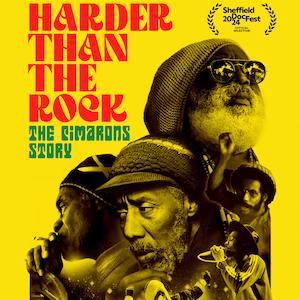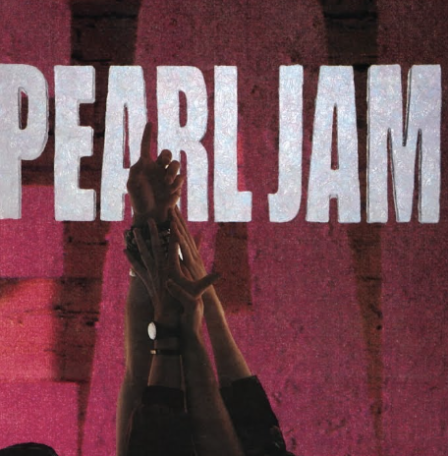Run Wrake- End Of A Century (Review)
By Jo Phillips
The year is 1990. Nelson Mandela was released from prison, John Major becomes prime minister and Total Recall hits cinemas. The first web page is also written before the internet dominated communication. Stuart Bailie of music archive NME sent Graphic Designer Run Wrake (who’d been working there for 2 years) a paper-based letter asking for a visual accompaniment to their Lightning Seeds review. In the proposition, Bailie described the Liverpudlians as “classy, sugar pop, lots of ’60s harmonies, a little like a down-market Pet Shop Boys, quite nice and swirling”, revealed the name of the album to be Cloudcuckooland and gave Run Wrake the permission to go abstract crazy. This letter and all it’s nostalgic glory is part of the foreword in Wrake’s pictorial memorial End Of A Century, and when you turn over to the next page, you see a typically half-literal, half-surreal response from the distinctively imaginative mind of a celebrated pioneer. Clouds and a cuckoo are present (to resemble the album title), the character is dressed in a classy outfit whilst holding a guitar to complete a 60s pop band outfit, whilst the flying position of the protagonist could suggest the swirling lighter than air vibe of early-The Lightning Seeds.
The artwork was a contradictory balance of being highly relevant and self-explanatory, yet odd and interpretative. It is just the beginning of an inspiring book of fictional worlds, collected by Wrake’s widow Lisa, that doubles as a homage to both Run Wrake’s artistic abilities but also a record of 1990s music, culture and politics, therefore essential for avid music fans, art enthusiasts and history buffs.
Before we delve into Wrake’s paradise of mixed media collages, thick-lined illustrations and cut-out printmaking freedom, we are introduced to Wrake’s journey by a journalist that was not only a critic and writer for the NME but also an associate of the late artist. You could even say that Andrew Collins played a crucial role in Run Wrake’s life by getting him into the magazine in the first place; through mutual recognition. From the way he words his introduction, you can tell that Collins is an experienced wordsmith but it simultaneously radiates sentimentalism and shares the same music geekiness that his former University (Chelsea’s School of Art) chum had. It’s length, typeface size and format flows like the artwork that it precedes. It was a very wise choice and most importantly doesn’t alienate book-collectors with a visual preference over words.
Collins describes him as “music mad” and it would be safe to suggest that Wrake listened intensely to the albums he would illustrate -partly out of curiosity – and undertook additional research away from the just the opinion of one NME’s critic. Although the initial concept is mostly around the wording of the title to make it immediately linked, acting a surface for wilder ideas to conjugate. The most obvious examples of where the album title is the entire concept are the photo-booth pop art of The Fall’s The Twenty Seven Points (it’s Mark E.Smith pointing 27 times), Take That’s Greatest Hits (the members of the pop band are engaged in boxing punches), whilst the artwork for The Frank & Walter’s Trains Boats and Planes and Passengers’ Original Soundtracks 1 are so incredibly literal, they don’t need to be explained. The aforementioned in particular aren’t deep in meaning but they are fun and don’t fail to rise a smile.
What is most intriguing is how Wrake approached and explored artwork when the titles weren’t so evocative. The results are sometimes freaky, in the cases of Beck’s Mutations, Smashing Pumpkins’ Siamese Dream, PJ Harvey’s Stories From The City Stories From The Sea and nightmarish in The Waterboys Dream harder, Pavement’s Terror Twilight and Billy Bragg’s Don’t Try This At Home. They can be accused of political and social statements on Boyzone’s Way Where We Belong (which was probably backed up by indie ridicule in the NME article), Blur’s Modern Life Is Rubbish and Consolidated’s Play More Music. His visions could also be ambiguous and dystopian in their meaning, such as in Sewer Shark’s Sega CD Vision, Soul II Soul’s Vol.II and Deee-Lite’s Infinity Within.
However, there many occasions where Wrake just ran riot with his ideas and let himself loose, resulting in creating striking, humorous and thought provoking ideas. Sugar’s File Under Easy Listening, My Bloody Valentine’s Loveless, Rage Against The Machine’s The Battle of Los Angeles and Foo Fighter’s The Colour and The Shape top the list in that respect.
Aside from the concepts, another aspect of the book that’s interesting is how it resembles the evolution of technology and media in that decade. Yes, it’s true that editing software Adobe Photoshop was born in 1990 but it wasn’t as easily available as it is now and it’s debatable how often Wrake even used the aid of computers for slicing and merging, especially in his earlier work. It is also worth considering that Wrake had an affiliation with fanzines in his University days and the look of the collages appears to be assembled in this photocopying manner. His work for The Orb’s The Orb Live 93 was his first full colour composition, which became a more standardized default choice over black and white. Sourcing for images of bands (which feature in most images if the act isn’t enigmatic) and objects that complied to Wrake’s planned vision must have been a more cumbersome task than the Google world of today. You can see evidence of this in the clever organic scanning of newspaper articles in The Fall’s The Infotainment Scan and the distinctive style and layering of Tricky’s Pre-Millennium Tension and James’s The Best of James. That’s an abundance of substance for a book that let’s the pictures do the talking.
End Of A Century is out 25th June through SelfMadeHero (www.selfmadehero.com) and you can read our other articles covering Run Wrake here:







